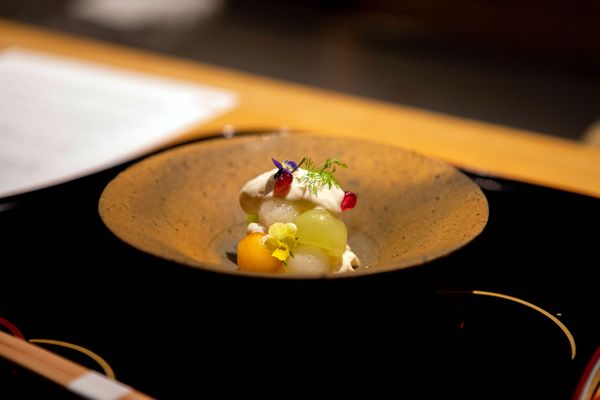Reflections on a culinary pilgrimage in a country where fish-based dashi dominates.
Interview by Jessica Thompson
Photos by Sherry Zheng
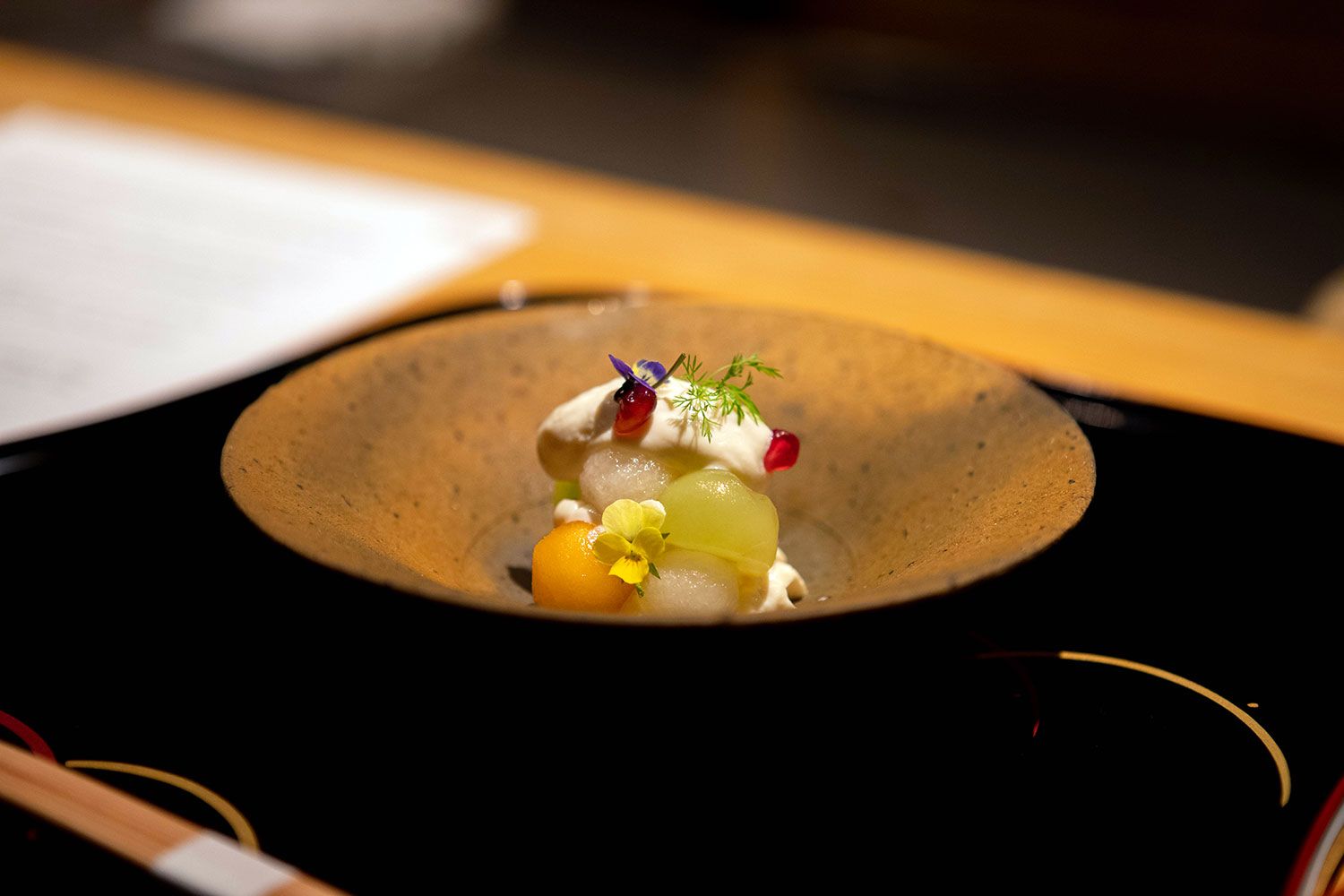
Amanda Cohen is a James Beard-nominated chef and pioneer of America’s vegan and vegetarian food movement. In 2008, she opened her restaurant Dirt Candy in New York City, serving dishes made only from plant-based ingredients. At this time, such restaurants were rare America-over and met with much hesitation. But Amanda persevered, and Dirt Candy continues to receives praise and accolades for its careful, creative, delicious food.
Late 2019, Michael Hallan Turkell – author of Acid Trip: Travels in the World of Vinegars and six-time visitor to japan – brought Amanda to Japan on a meat-free, dairy-free food pilgrimage with Tokyo Tourism. It culminated in a multi-course popup collaboration with local all-female kaiseki restaurant, Tsurutokame in Ginza. Dishes seasonal fruit with tofu sauce and dill, walnut tofu with fermented soy beans; soba noodles with black truffles and field caviar; and even a carrot slider graced the tables.
We caught up with Amanda and Michael about the state of plant-forward cuisine in Japan, and their take-outs from their travel.
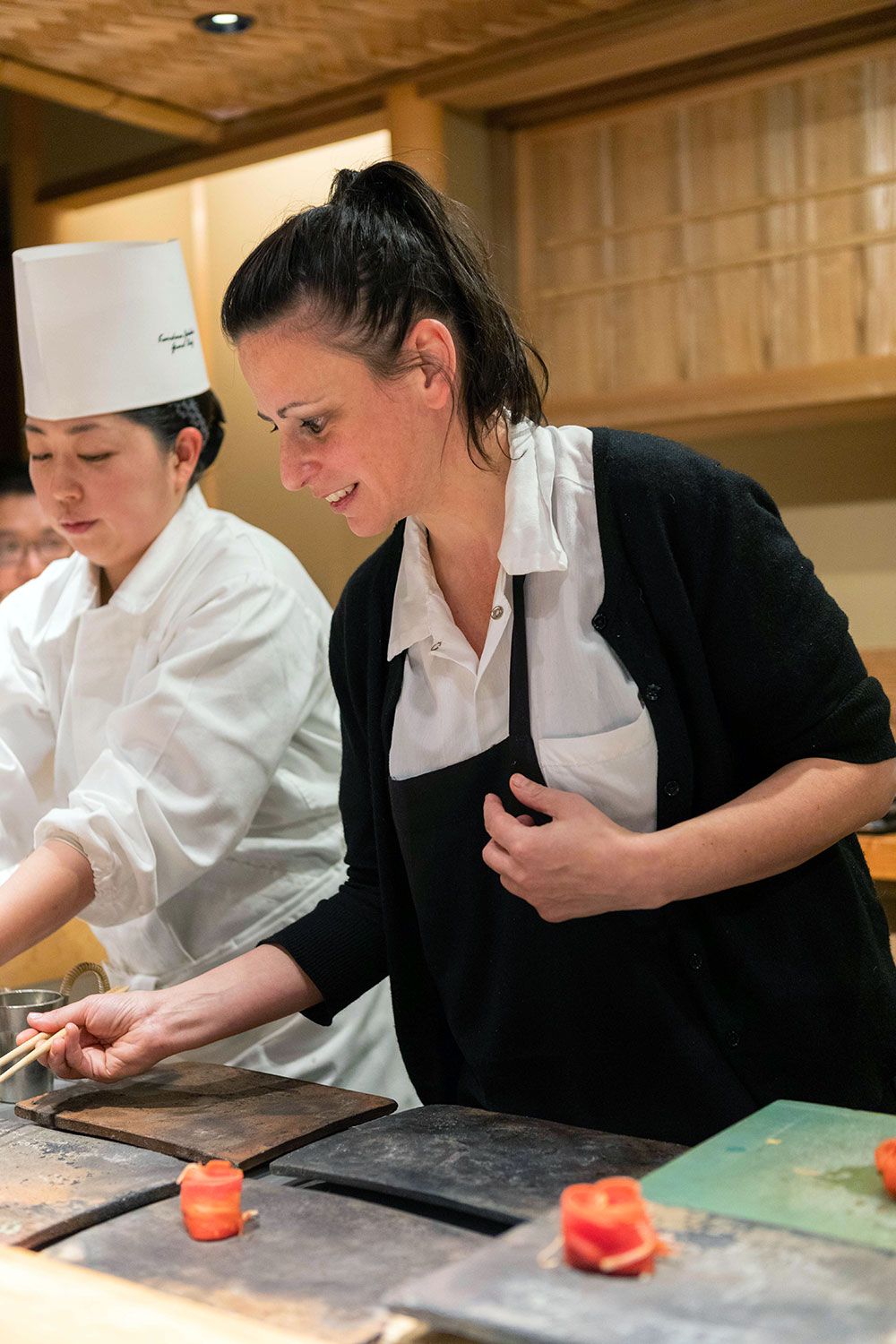
Amanda, how did you come to open a vegetarian-vegan restaurant?
I spent a long time working in almost every vegetarian restaurant in New York City and had hit a ceiling. I had done every job and couldn’t get promoted above the positions I’d already held. I had so many ideas about how to cook vegetables and so many experiments I wanted to try with them but no one would let me do them. Finally, after getting fired from my last job when I told my boss that I didn’t think the numbers in his business plan added up, I decided it was now or never, rounded up all the money I could find, and opened Dirt Candy.
What was the story behind the recent collaboration in Japan?
(M) I think vegan-vegetarianism is a burgeoning topic in Japan, as most meals consist of fish (even if just in the dashi). Many foreign travelers are looking for vegan options, so this might be more driven by non-Japanese, but is quickly becoming adopted nationally. Not to say there aren't vegans and vegetarians in Japan, but aside from shojin ryori, there aren't many vegetable-only cuisines. Halal has had a big effect. But wanted to show traditional foods of Japan, not those with an international influence.
How has the attitude to vegan and vegetarian food changed in America since you first opened Dirt Candy in 2008?
(A) Dirt Candy was the first vegetable-based restaurant in America. It wasn’t vegetarian or vegan because it had no health, environmental, or political agenda. It was only about making vegetables taste amazing. Since then, so many restaurants have opened that focus on the flavor of vegetables rather than serving the vegetarian or vegan lifestyle and Dirt Candy led that change.
What are the most difficult aspects of preparing vegetarian-vegan food?
(A) Cooking vegetables is hard. You can throw meat on the grill and you’ll wind up with something that tastes okay but you can’t do that with vegetables. They require more preparation and more techniques. They have a high water content that you have to deal with, they don’t have any fat and fat carries flavor, and their cellular structure is consistent and they have thick cell walls, so they can be a little boring to chew whereas meat has fat and a lot of different textures in every bite.
What have been the most challenging factors to overcome to raise the profile of vegetarian-vegan food in America? Do you feel these are the same in Japan?
(A) People think that vegetables shouldn’t cost as much as meat, so it’s very hard to get American diners to pay normal restaurant prices for something they consider ‘just’ vegetables. I don’t think Japan has that problem, however. Everywhere I go here, I get the impression that people understand that fruits and vegetables can be very expensive.
What are some of your favorite Japanese vegetarian and vegan ingredients, dishes or food moments you experienced on your recent or previous trips to Japan?
(M) I for one love miso in sweet and savory. I've recently become a big fan of Hatcho miso after a trip to Aichi, and using that for a thick hearty udon noodle soup/stew. That, and real mirin (this is my fave), which is excellent as a sweetener in cocktails (try a Mirin Manhattan, or even sub it for vermouth in a Martini). I'll also put sansho on anything. Oh, and you know I love vinegar! Iio Jozo from Miyazu is the best I've ever had, though I am fond of many kurozu (black vinegars) from the Kagoshima area as well. And Monjayaki! Love an interactive meal, so much to cook on the griddle, and definitely distinctly Tokyo compared to Osaka's okonomiyaki. Also, it can easily be made vegetarian-friendly by using kombu dashi rather than bonito.
What did you learn during your time in Japan about the role of animal products in Japanese cuisine, and status of vegetarian-vegan food?
(A) Although a lot of people told me it was very hard to make Japanese cuisine vegan, I actually found it quite easy, and a lot of that was because I was an outsider and didn’t understand the tradition it came from, so I only dealt with the plate in front of me, not hundreds of years of tradition and habit. There is also a very strong tradition of vegan food in Japan, but it wasn’t well known to mainstream diners.
(M) Aside from seafood, beef is most prized, but so expensive. There isn't much land to raise cattle, and though pork is prevalent too, it's an island county with widespread coastal fishing communities. Fish is still elevated to the top of the food pyramid. Meat is a more of a specialty item, mainly because of cost. There's plenty of chicken I know, but yakitori could be an excellent showcase for a veggie-tasting menu, same with tempura, but that was hard to find, if not impossible.
What do you think is exciting about the potential of vegan-vegetarian food in Japan?
(A) I think there’s so much that can be done. There are so many different exciting ingredients and dishes that need to be explored. There can be as many different kinds of vegan ramen as there are of meat-based ramen, you just need the time to play.
(M) It's already there, I mean, there's such a basis and understanding of the vegetables themselves. When they're in season, how they're best cooked/served, but they're often in supplement to main dish, and rarely the centerpiece. When they're pickled and fermented they're so much more profound than just being garnishes and ornament. Check out Mique if you haven't been already, it's artful yet comfort food. And Ain Soph: Ripple made a great vegan burger, which I though would be touristy, but lots of locals eat there too!
Can you explain three of the dishes from your popup, and the inspiration and ingredients behind them?
(A) I created my Portobello Mousse because I wanted to make mushrooms taste as luxurious and rich as foie gras. I didn’t understand why that kind of smooth, full flavor only came from meat. My Carrot Buns came about because I was frustrated that every veggie burger was a puck made of mushed together beans and other bits. Why couldn’t a single vegetable be the burger? And the Butternut Squash Consomme is harder than it looks. Why does every vegetable soup wind up being a puree? Why can’t it be clear and light? I discovered that making a vegetable broth clear and still having it be full of flavor takes a lot of hard work, but it’s worth it.


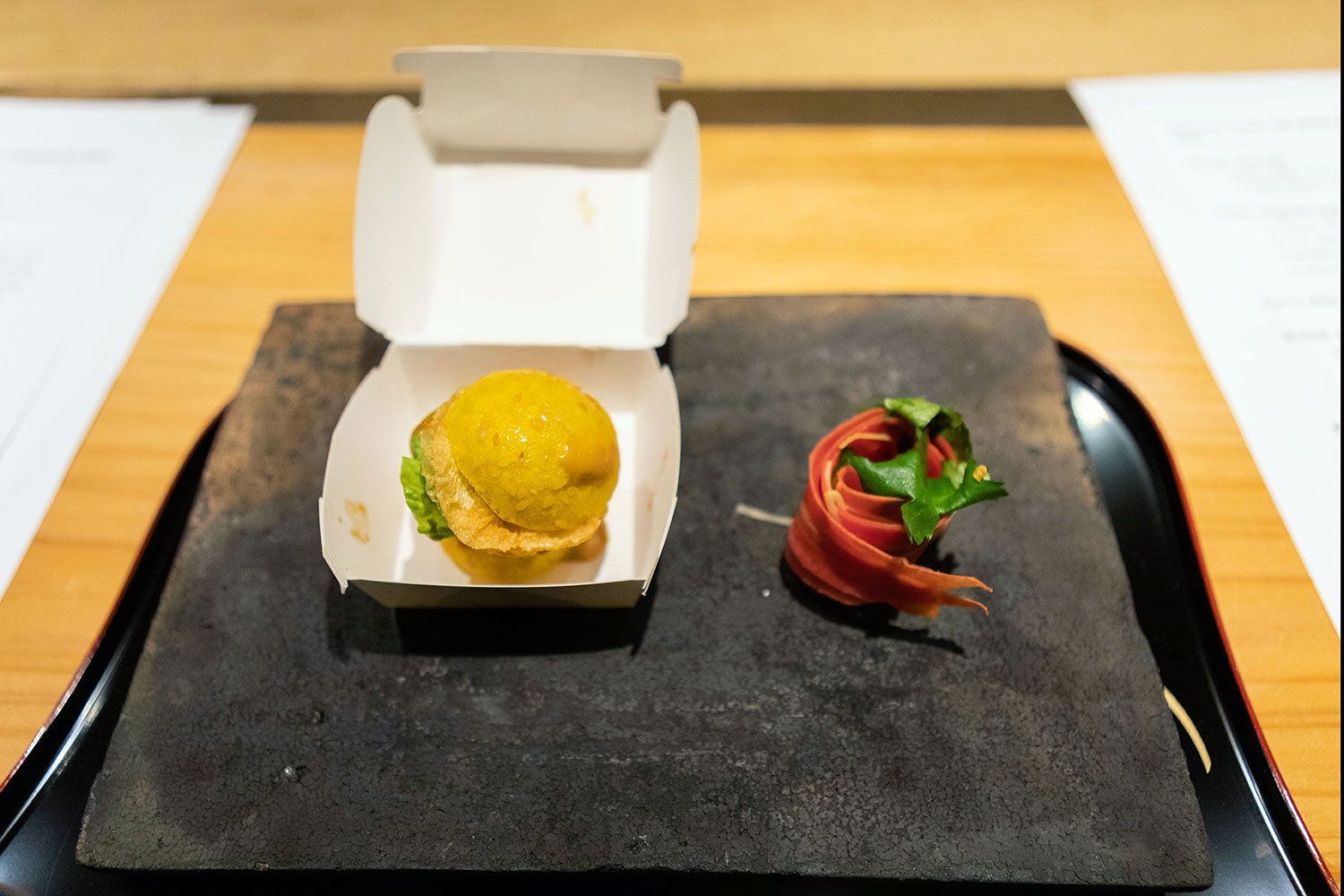
What did you take back to America from your travels in Japan?
(A) Tasting fresh yuba really blew my mind. I’ve used it before, but never made it fresh, and I’m planning on making it fresh at Dirt Candy soon. Then at the pop-up at Tsurutokame, they used all the vegetable scraps from the vegetables we ate throughout the dinner and turned them into a final course and it really tied the meal together. I’d love to try to do a version of that myself.
(M) Veggie-based cocktails! Ask Amanda about Bar Ben Fiddich (e.g. Daikon Gin Tonic). Also, how great fresh yuba is (Uzukino Honten does a serve yourself steam table brunch on weekends), and the quality of soybeans in Japan are just so much better than what we're used to in the States. Started making my own soy milk to make my own yuba now. I'm still trying to figure out the thought process behind vegan ramen though. Many are just too sweet, or don't have enough texture or techniques going on; they steer more towards healthy than delicious. And how you can break from traditional, like Chef Nomura-san at Sougo, but still pay respect to it. His goma dofu is the best I've ever had.
When can we expect to see you in Japan again (and especially, be able to eat your food again in Japan?!)
(A) Anytime you invite me back, I’ll be here!
What words of advice do you have for chefs wanting to offer more (or solely) vegetarian-vegan menus?
(A) Have fun and don’t be afraid. I see so many vegetable menus where the chef doesn’t take risks and is very serious and that’s a terrible idea. People don’t need a protein at every meal and they want to have fun. Every plate doesn’t have to be nutritionally balanced. Go wild and do things someone won’t expect. Make your diners smile.
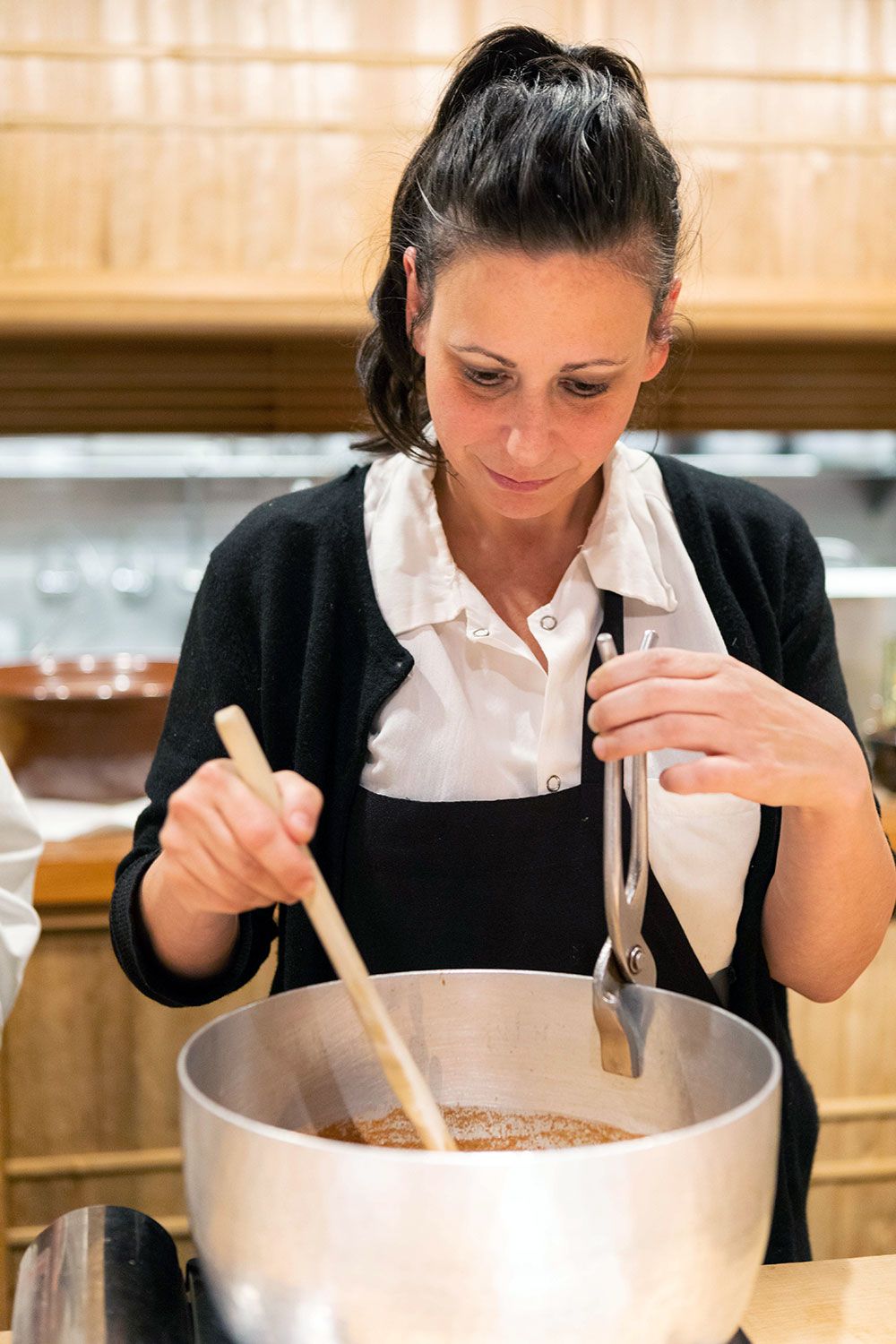

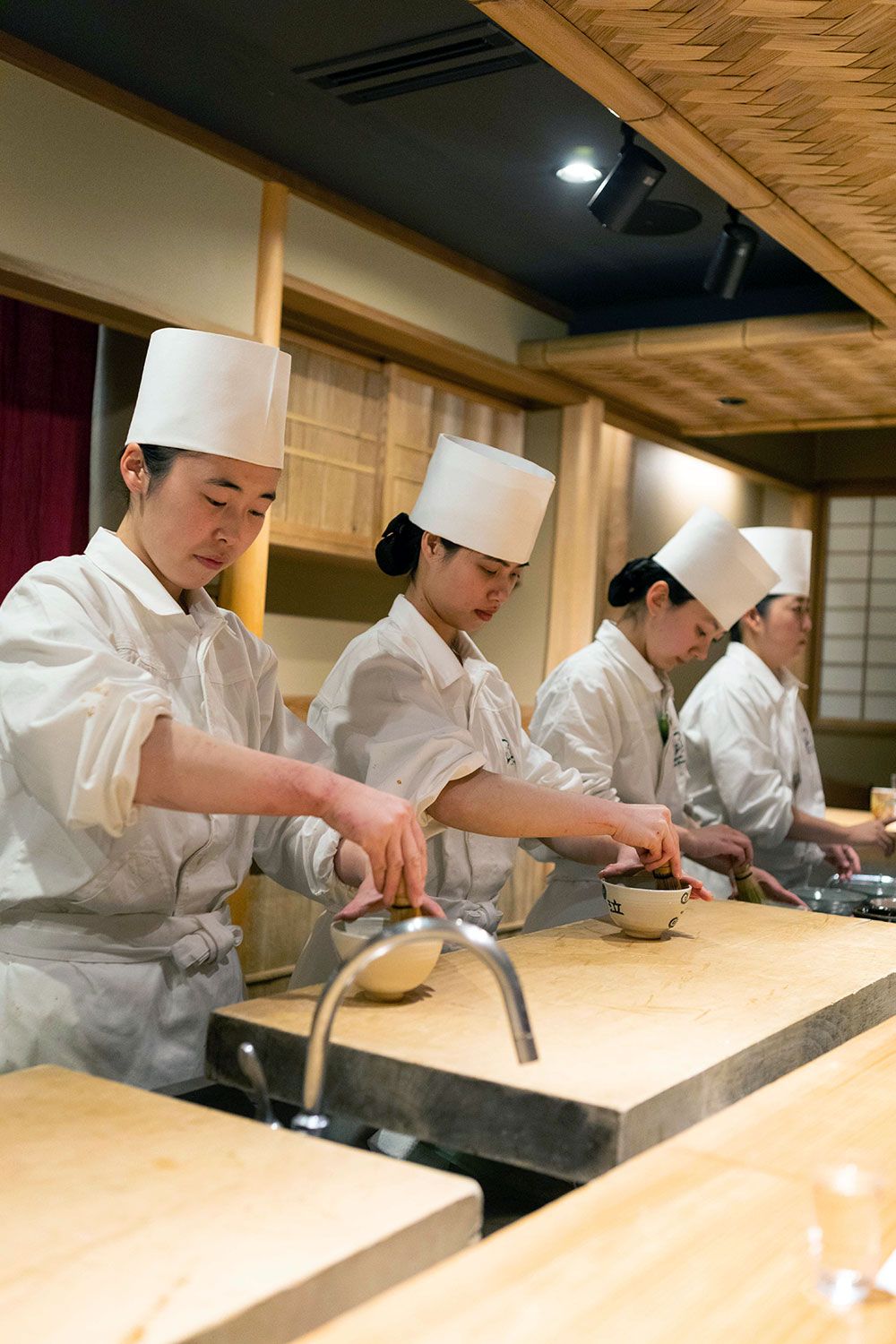
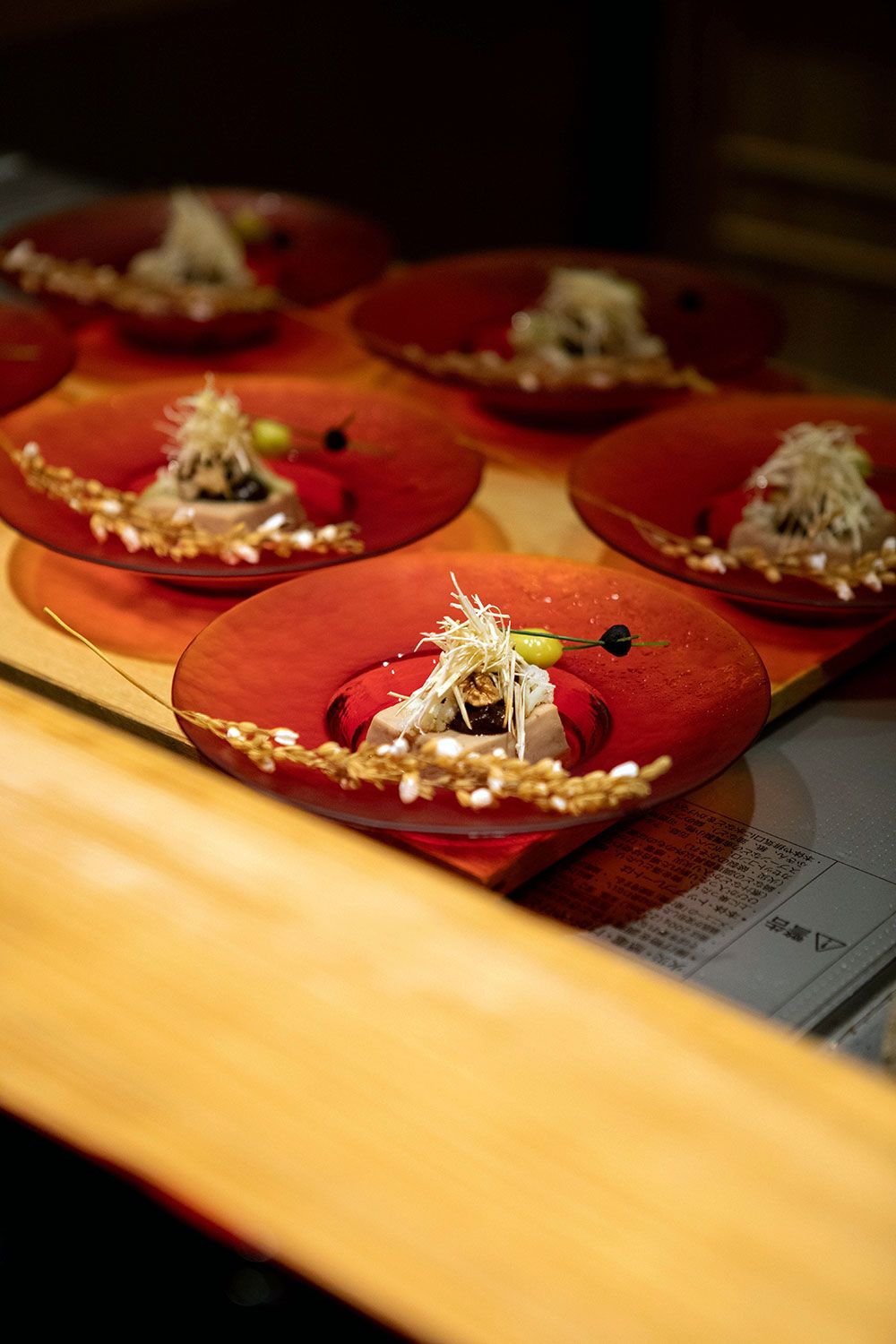
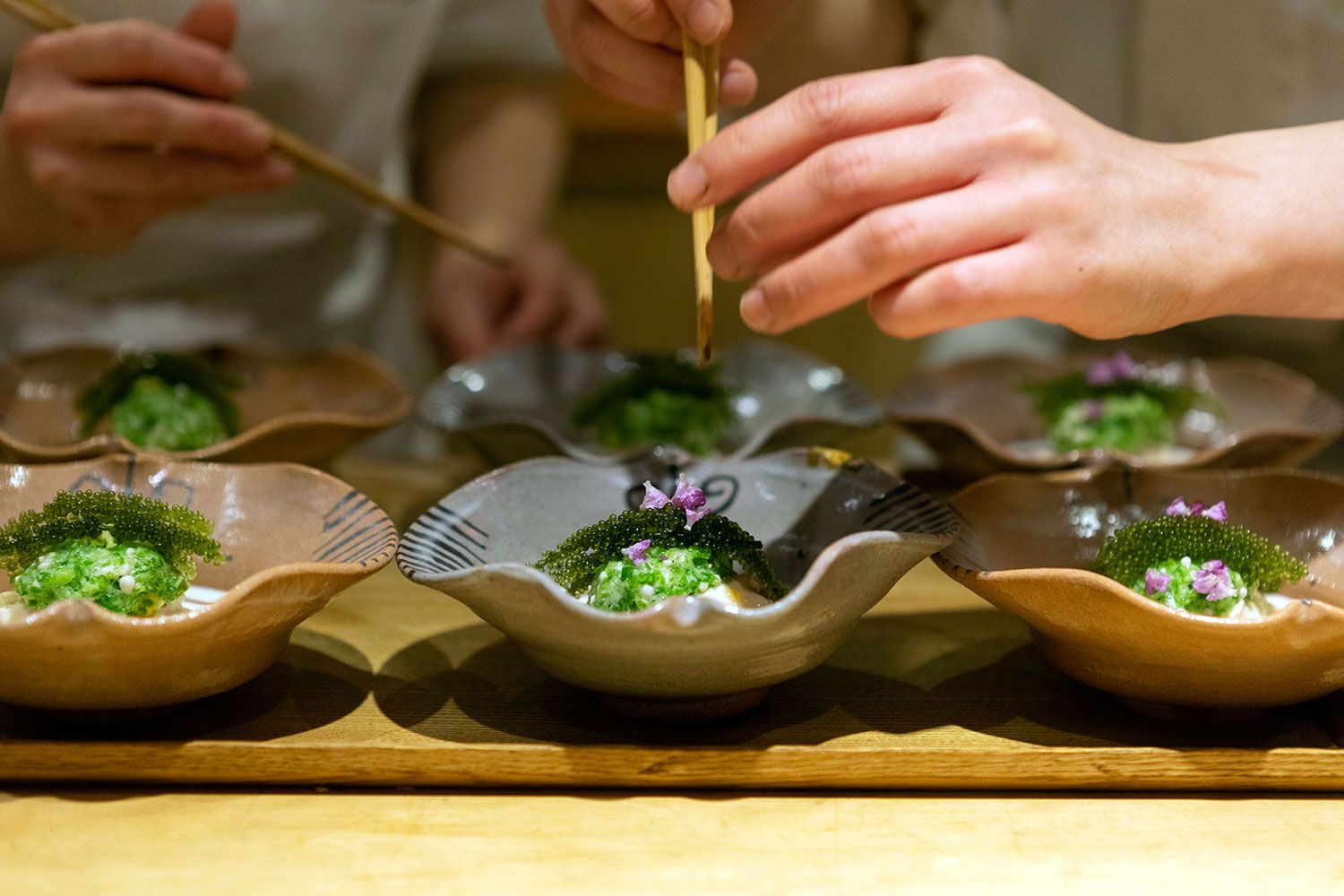
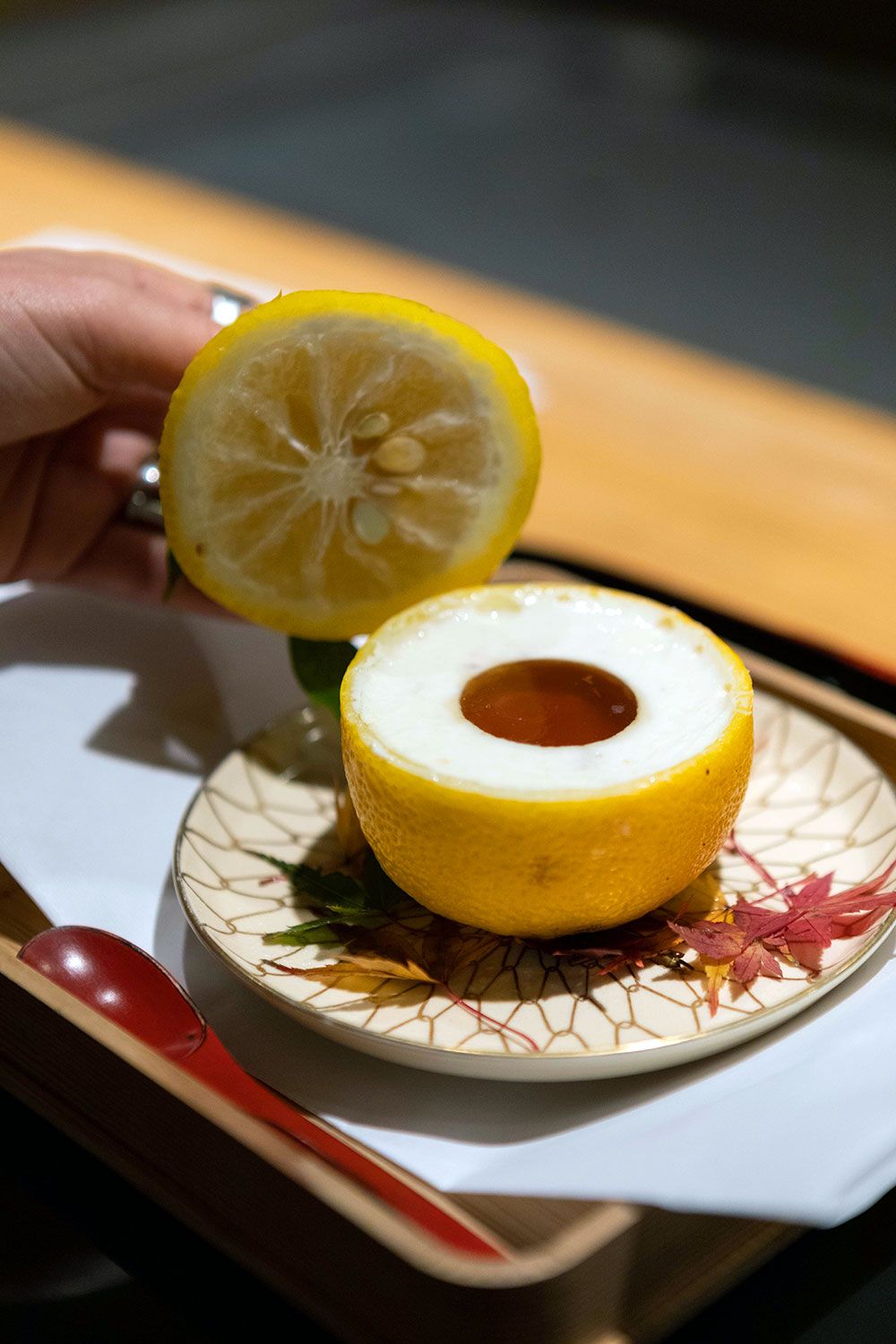
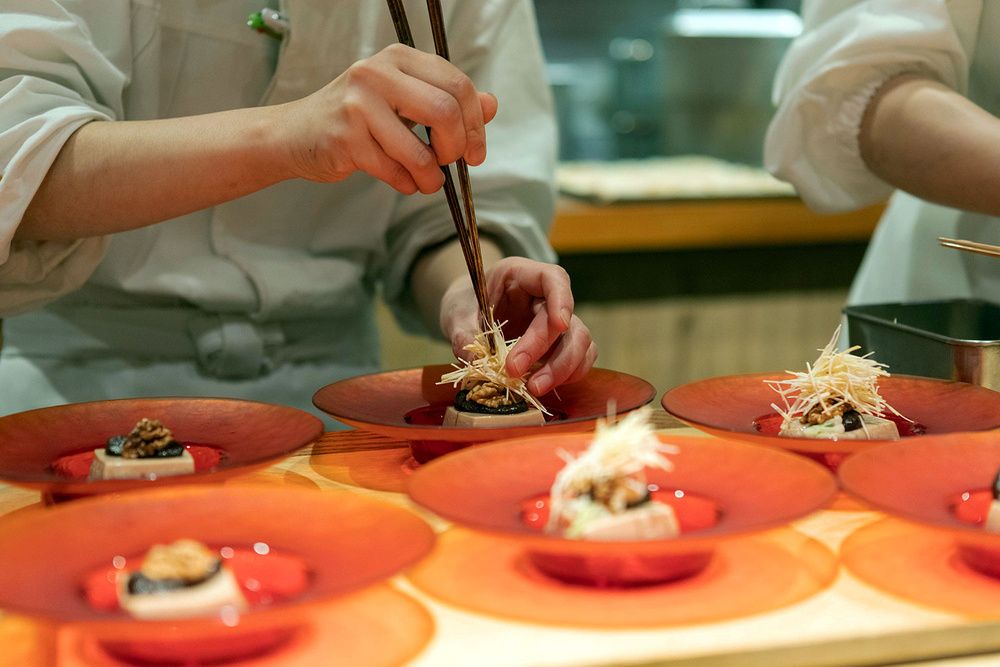

If you liked this article, please consider supporting APPETITE. Your donation will go towards project costs and paying creatives. One-off donations start from $5 via Buy Me a Coffee.

